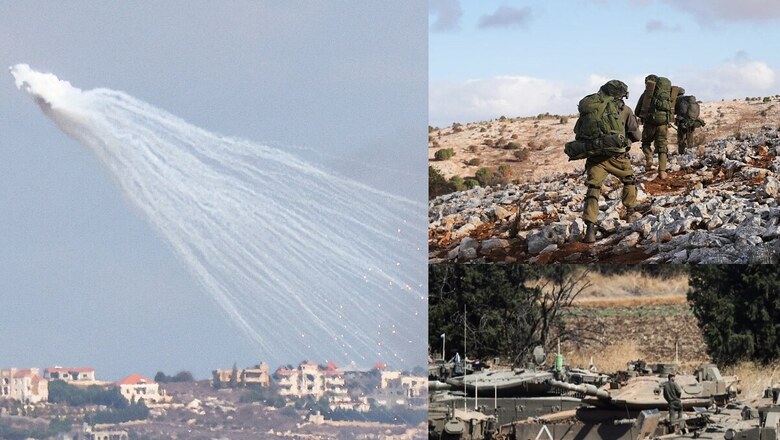
views
On the eve of the first anniversary of the deadly Hamas attack, Israel continues to stare at mounting challenges in achieving the three main goals it set out days after the unprecedented assault on October 7: dismantling Hamas, securing the return of hostages and improving security for residents living near the Gaza border.
Goal no. 1 — Dismantling of Hamas
The attack left over 1,200 Israelis dead and saw around 250 people taken hostage. In a swift and deadly response, the Israeli Defence Forces (IDF) launched a large-scale military campaign aimed at crippling Hamas. Israel’s military strategy focused on targeting Palestinian outfit’s operational capabilities through airstrikes and ground operations.
The IDF attacked thousands of Hamas facilities, including tunnels and weapon stockpiles. The IDF claimed that the country defeated Hamas “militarily” across the Gaza Strip and it is now operating as a guerrilla outfit, according to The Times of Israel. The Israeli military said Hamas is no longer the same outfit it was before October 7. Despite these triumphs, IDF spokesperson Rear Admiral Daniel Hagari in August admitted that completely eradicating Hamas as a movement is not feasible.
It is important to note how the dismantling of the Palestinian outfit came at a cost with a high civilian toll in Gaza. According to local health authorities, over 41,000 have died, leading to widespread international criticism. Israel has also drawn allegations of war crimes against and raised tough questions about the ongoing military campaign.
Goal no. 2 – Release of Gaza hostages
A year after Hamas kidnapped roughly 250 people and brought them to Gaza, the fate of the hostages remains a key concern. During a weeklong truce in late November, Hamas released 105 civilians, and four hostages were released before that. With 97 captives still held in Gaza, the situation remains dire. According to the Israeli military, 33 of these individuals are believed to be dead.
However, some 64 people, including two children, are thought to be still alive and in captivity. Amid the unresolved hostage situation, Israeli Prime Minister Benjamin Netanyahu’s government has faced scrutiny for its handling of this issue, with growing public ire on the lack of progress in securing the hostages. Netanyahu, accused by critics of stalling in truce negotiations and prolonging the Gaza war, has blamed Hamas leaders for rejecting terms of a possible truce and hostage deal.
Amid continued IDF assault, Hamas chief Yahya Sinwar has reportedly hardened his stand against negotiating a hostage deal with Israel. US intelligence assessments indicate that Sinwar believes he may not survive the ongoing war, which has hindered any potential talks regarding the release of hostages held in Gaza. According to The New York Times, Hamas has shown little interest in continuing negotiations over the past few weeks. Sinwar’s belief that a larger conflict could pressure Israel into scaling back its military operations in Gaza has further complicated the prospect of a deal.
Goal no. 3 – Border Security of Israelis
Even though the war in Gaza is far from over, Israel is now engaged in fierce cross-border clashes in the country’s north with the Lebanese Hezbollah group. With the situation deteriorating in recent days, restoring security for those living near the Gaza border has proven challenging amid the escalation. Residents near the Israeli-Lebanese border are increasingly fearful of escalating violence as tensions between Israel and Hezbollah continue to rise.
Yair Pinhas, a 32-year-old software engineer from Kiryat Shmona, said “There will be a lot of deaths” in the ongoing conflict. Pinhas grew up in Kiryat Shmona, a town surrounded by Lebanon, and has witnessed the region’s volatility firsthand, CNN reported. His family has been living in a hotel near the Sea of Galilee since they were evacuated following the October 7 terror attacks. The proximity of Shmona to Hezbollah makes it vulnerable to cross-border attacks.
Over the past year, Hezbollah has launched regular strikes against Israel in support of Hamas, leading to a cycle of retaliation. The Israeli military has responded with cross-border attacks, and tensions have escalated significantly since October 8. Earlier this week, the country’s Home Front Command imposed new restrictions across northern and central Israel, including Tel Aviv, Jerusalem, the coastal Sharon region, the Carmel area near Haifa, Wadi Ara, and the northern West Bank.
Schools and workplaces without adequate bomb shelter access are to remain closed, while beaches are also ordered shut. Gatherings are restricted to 30 people outdoors and 300 indoors, according to The Times of Israel. These measures follow reports of three or four rockets fired at central Israel from Lebanon. Given the current situation, it remains clear that Israel’s aim to achieve its three stated goals is still a work in progress.




















Comments
0 comment